One of the big lessons COVID taught me: meet people who love board games. A major key to that lesson is to ensure you have friends who both love games and who love buying games. In a world where 5,000 new titles enter Board Game Geek’s database each year, you won’t have the money to buy them all.
Another big lesson COVID taught me with strategy games: lots of people like to play games with a high rules complexity, but don’t like the idea that they might lose a game by making a bad decision on the first or second turn, maybe even during setup.
Enter Galactic Cruise, the new Eurogame strategy title from first-time publisher Kinson Key Games. I have had the chance to meet and interact with members of the game’s design team (TK King, Dennis Northcutt, and Koltin Thompson) a couple times over the last two years, as the designers have thrown themselves full throttle into the production cycle of the game. The Galactic Cruise crowdfunding campaign raised more than $800,000 and recently began fulfillment to backers.
From the jump, Galactic Cruise openly pays homage to many other heavy Euros of the last 10 years, right down to using quotes from other prominent designers during the campaign. (While Kinson Key handled fulfillment, Allplay is the retail distributor of the game in the US.) Galactic Cruise is a very Vital Lacerda-like gaming experience, and as a person who considers himself a fan of Lacerda’s other titles, I was keen to try Galactic Cruise, especially since two people in my Chicago gaming circles backed the game.
Over the course of six days, I had the chance to play Galactic Cruise twice with the same three-player group—once using the game’s introductory tutorial setup, and once using the standard setup. While our man Will Hare works on the delivery of our site’s formal review of the game, I wanted to offer a hot take on what I’ve seen so far.
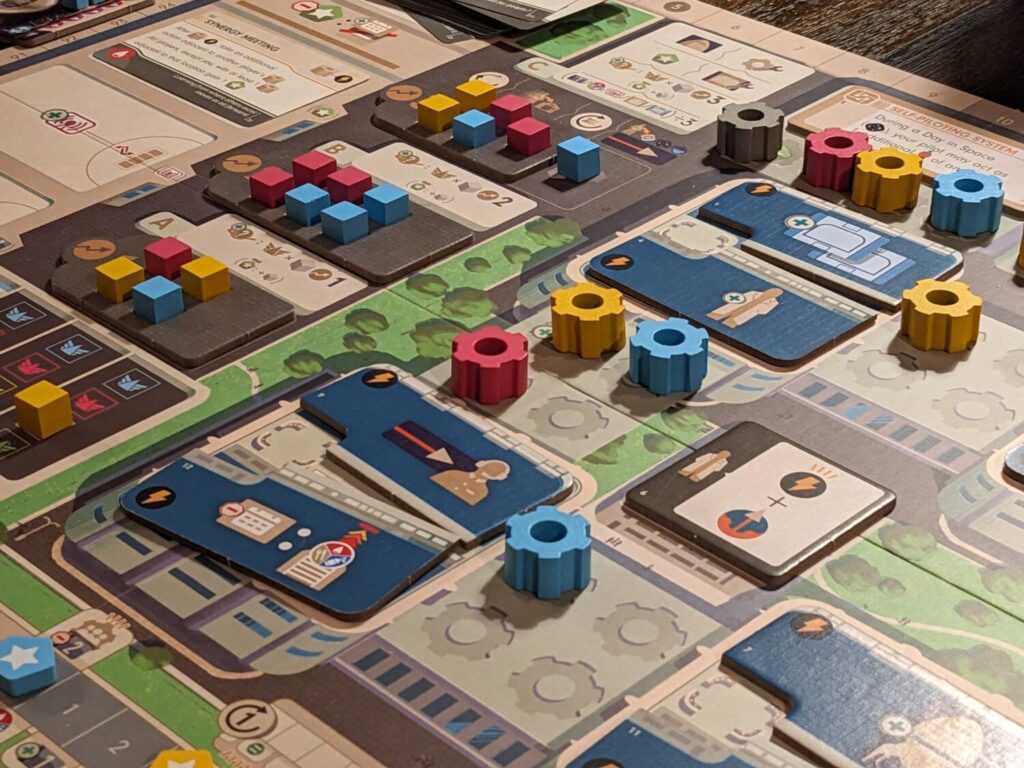
“Wait, Isn’t This Mechanism From _____?”
Galactic Cruise is an economic worker placement game that accommodates 1-4 players. Everyone at the table is competing to become the next CEO of Galactic Cruise, the in-game company where each player works. To do that, everyone is trying to impress the board of directors, captured here by scoring the most victory points. Over a variable series of rounds, actions are triggered by either placing workers on one of six action spaces (and kicking out any opposing player’s worker currently holding a space, if applicable) or launching a cruise, which is typically the best way to score in-game points. If a player can do neither of those two actions, they pass, take back workers, and take one action anywhere on the main board that is connected to one of their development markers.
Galactic Cruise feels like a love letter sent to a fan of Lacerda’s previous titles published by Eagle-Gryphon Games. As a person who owns The Gallerist, Kanban EV, Vinhos: Deluxe Edition, Escape Plan, Inventions: Evolution of Ideas and On Mars, Galactic Cruise borrows so heavily from some of these titles that I had to be reminded that game mechanisms cannot be trademarked.
Need money by moving down on a reputation track, just like The Gallerist? That’s here. Want to bump out another worker, just like House of Fado or The Gallerist? That’s here too. The AGMs felt a lot like the mid-game scorings in On Mars, and just like after the third meeting of Kanban EV, a game of Galactic Cruise is over.
Here’s how Galactic Cruise offers a distinct difference between itself and a Lacerda title—while all these games are rules heavy, Galactic Cruise is significantly more forgiving than any of the Lacerda titles.
Many of my favorite worker placement games, such as Caylus, Beyond the Sun, The White Castle, and Skymines (the new version of Mombasa), create real tension—I might even suggest “drama”—around getting the space that a player needs to execute actions. In the final round of Beyond the Sun, I might only have three ore and a population cube but, if the level one colonization action that I need is blocked by another player, I won’t be able to take a meaningful action. That might cost me the game!
In Galactic Cruise, the designers clearly articulate their intentions through the flexible nature of the action selection. No action in Galactic Cruise is ever blocked. If another player’s worker is in the space you want, you simply bump them out, and the bumped worker earns a “funding bonus”, a minor award for simply being bumped. Early on, that might be one resource, but even that one resource might be enough for that player to launch their next cruise.
That flexibility extends into the technology area. Each game of Galactic Cruise features four techs (from a pool of eight that vary from game to game), techs which can be accessed by placing a development marker on a tech of the player’s choosing. The cost for this is not bad early on—a mix of five coins and/or resources, in a game where money is relatively easy to get thanks to a variety of sources—and a player could instead access any previously-researched tech by paying each opposing player a buck or two when they really need the tech.
Players even get to take one main action when they recall their workers! This isn’t even a bonus power! Recalling workers, like having a worker get bumped from their action space, grants at least two funding bonuses and one main action. This was so gracious that during my second game, I forgot to take my free main action during my first three recalls. I somehow still won that game despite forgetting to take three full actions.
I don’t think this is necessarily a knock on the game. It is important to understand that Galactic Cruise is a very, very forgiving game. In that second game, one player changed strategies halfway through the game and still came up just 10 points short of a victory.
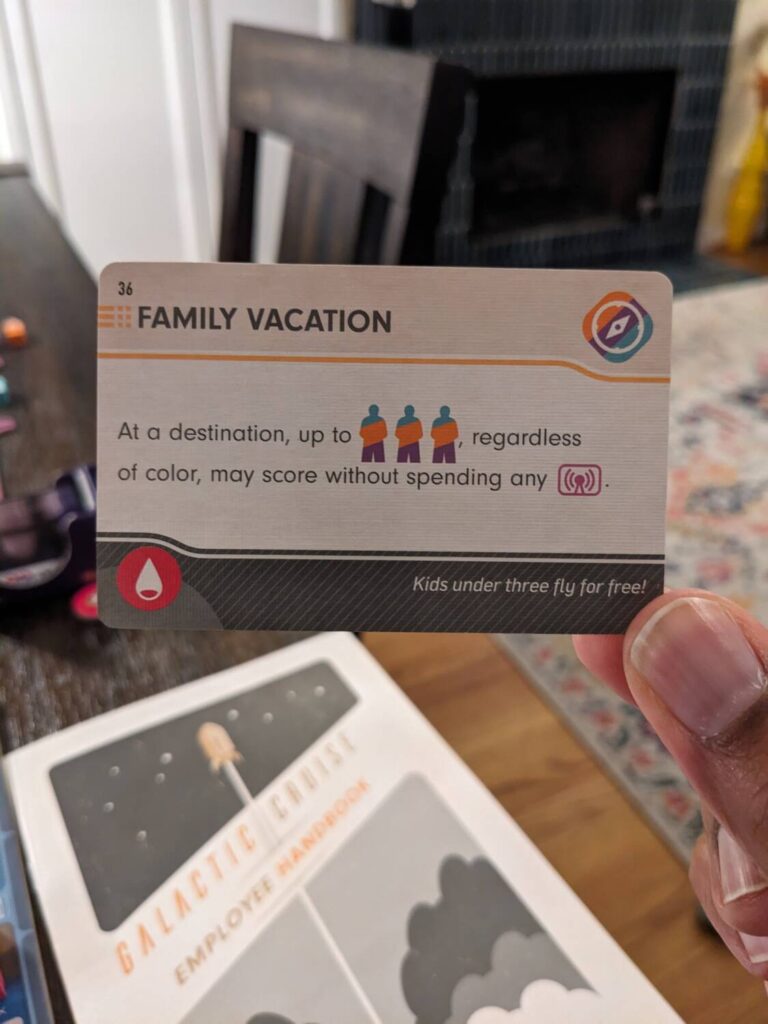
The Cards and the Techs
Galactic Cruise is an exceptionally well produced tabletop experience (right down to artwork from—you guessed it, Lacerda fan!—Ian O’Toole) that did give me the sense that I was running a tour business in a pick-up-and-deliver format. I need to schedule cruises, gather passengers by using ads to attract them to my cruise, then I launch them into space and earn rewards for doing so. Nothing about the base game mechanics sent me into orbit, but it was a nice time at the table.
Where the experience elevates a bit is in the use of agenda cards, game-breaking abilities that can be played during a player’s turn as long as the card action aligns with the action being performed. (Cards double as one of the three main resources—food, oxygen, and fuel—if a player decides to burn the card for its resource instead.)
Some of the cards feel broken. That’s a good thing here, in a game with a sizable deck. If a game has a dedicated action to take cards—and a dedicated action to refresh the market, which we’ll come back to—then there has to be a reason to go to that market. Galactic Cruise does a great job of incenting players to at least consider the agenda cards.
While the public/shared technologies are not interesting enough to invest in, each player has access to nine personal technologies that are quite interesting and already offered my group fun ways to break some of the game’s rules. Players can build more rockets, get better reputation bonuses, or bump their own workers with some of these personal technologies. For fans of setup variability along with disparate player powers, Galactic Cruise has you covered.
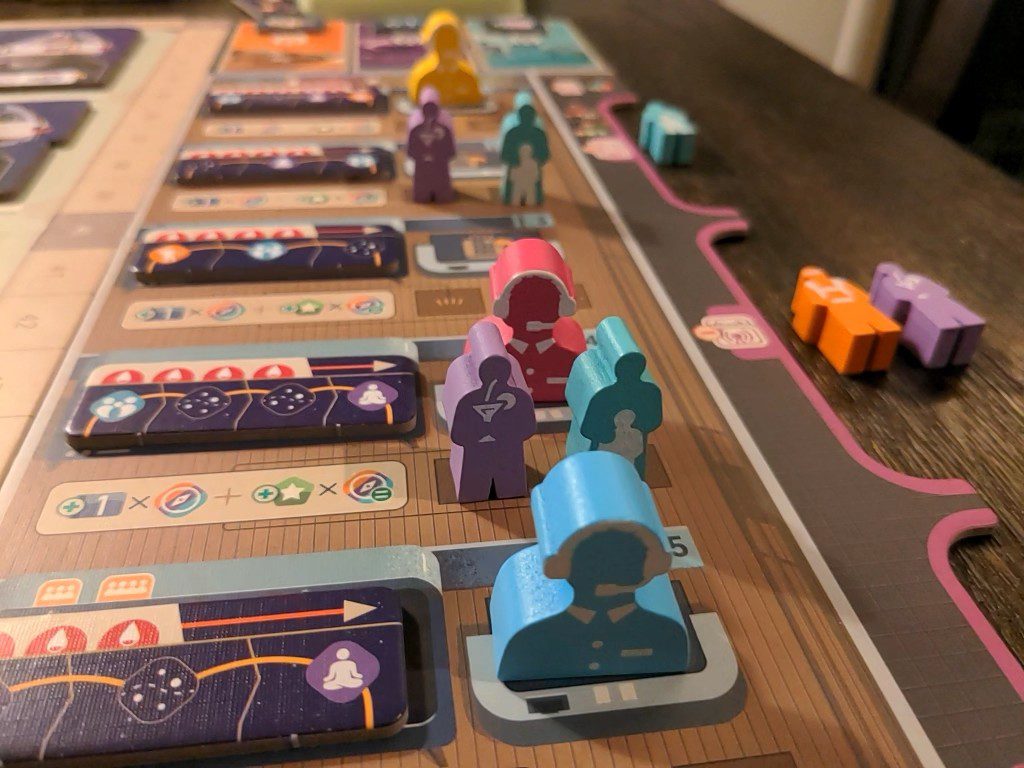
What Didn’t Work?
My big hangup with Galactic Cruise is that it feels a bit too loose for my preferences of a strategy game. Cutthroat, this is not. The level of interaction here is very low. It’s essentially impossible to mess with another player’s plans; worker spots are essentially always empty (I’m never going to skip an action because another player’s worker is there, I’m totally fine if you get a buck while I take four resources to set up my launch on the next turn).
Money is not tight enough. You begin the game with 10 money. That has been enough to fuel my first few turns in each of my plays. Even when I have run out of money, spending a turn or two to make money back has not been difficult. (In a nod to Lacerda game player aids, Galactic Cruise’s excellent player aid includes sections reminding players how to earn points, reputation, and money.) Unlocking the development markers needed to access more actions as well as the public technologies is relatively easy, because they can be built using a mix of both money and resources from the associated tracks.
I have no idea why the designers kept 12 individual actions for this game; that’s too many. Some actions, such as the action that offers players a chance to unlock one of their Expert Workers, are only used a maximum of twice per game. Why is there a separate action space for that? Another action lets players schedule a cruise, but a different action is used to attract tourists to each cruise.
The rules bloat is real here; the official teach video (Gaming Rules) is 51 minutes long. “I’m glad you guys were OK watching the teach video, because there’s no way I want to teach this to new players now,” said the guy who showed off his copy for our two plays. “There are so many rules!”
Teaching Galactic Cruise live is a big lift—albeit a lift that is mitigated by its excellent player aid, which keeps players warm between turns by answering many simple questions—and I think most people will want to only play the game with a dedicated group that knows their way around.
Playtime? Our two plays each took about two hours and 15 minutes. That’s not bad, but I have read horror stories online where newer players took 3-4 hours to complete their first game. In one extreme case with slower players, a friend noted that he and his playgroup only got through the first half of the game during a three-hour play session.
I think Galactic Cruise will thrive for me as a two- or three-player game, max. Four players wouldn’t add anything for me, particularly in a game where interaction is so minimal.
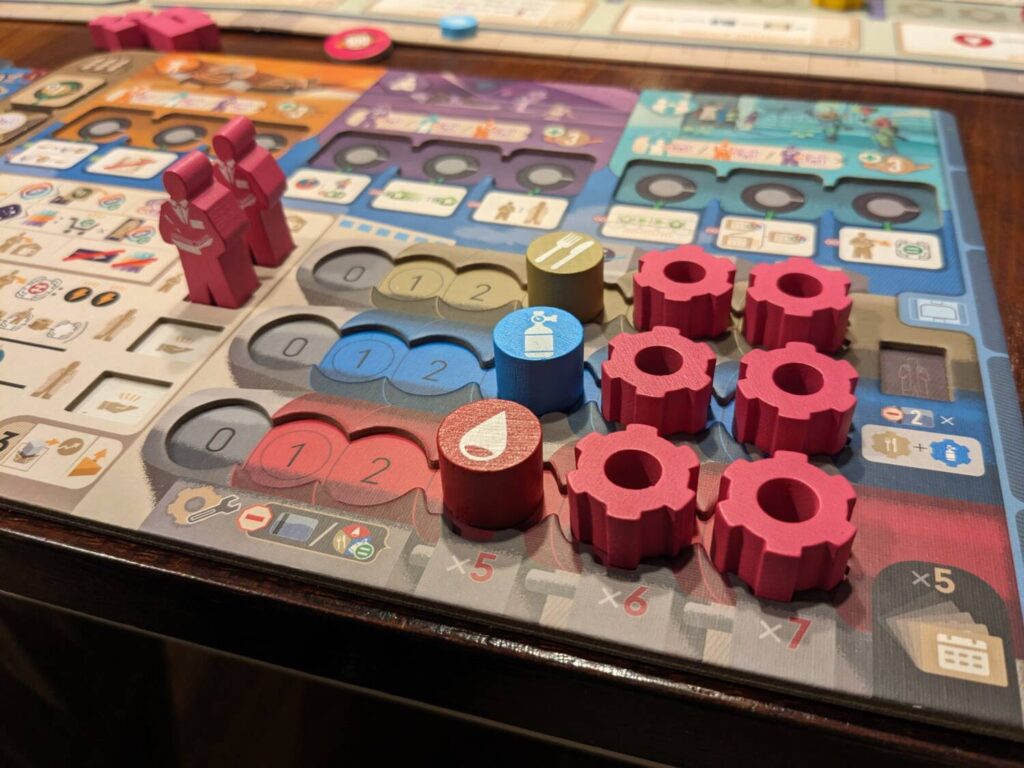
A Great First Design
Galactic Cruise is a good time at the table. While I would personally prefer a harder, tighter game, I can’t argue with the direction Kinson Key took with their first game. In fact, I think owning this would be ideal if you know players who prefer heavier strategy games but have an audience looking to try a game that is heavy on rules but light on consequences.
The production here is really special. It feels just like an Eagle-Gryphon production in every way. The storage solution, the rulebook, the board layout, and the player aid are all excellent. The screen print on those workers and bits? Yes please. The metal coins included in the deluxe edition? Real nice. The setup variability? Absolutely, particularly with the way each of the 12 actions can be split up in the standard game so that no two games will start the same way.
I’m glad I got to try Galactic Cruise and I am looking forward to Will’s review to see what he thinks after his first few plays. The hype has been out of this world and now I’m curious to see what Kinson Key does next!




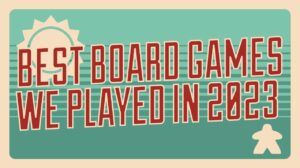






Add Comment